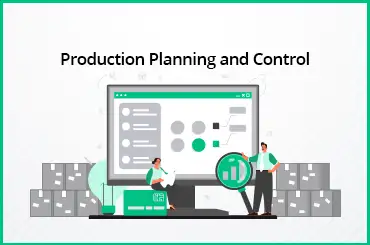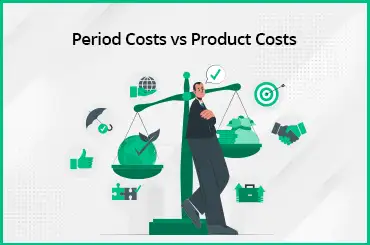Demand planning is essential for every manufacturing business to succeed. Demand planning is the process or technique using which a company becomes aware of the future demand for inventory to customize its production accordingly.
Using a demand planning method, the company can avoid overstocking its inventory and a high amount of inventory maintenance costs.
In this article, we have explained key components of demand planning, strategies for effective demand planning, tools for demand planning, best practices for demand planning, challenges in demand planning, and more to help you plan better and increase your return on investment (ROI).
Understanding Demand Planning
By understanding demand patterns, businesses can optimize their inventory, production, and supply chain operations to meet customer needs effectively and minimize costs.
What Is Demand Planning?
Demand planning is a strategic process used by businesses to forecast and anticipate customer demand for their products or services. It involves analyzing historical data, market trends, customer insights, and other relevant factors to estimate future demand accurately.
The ultimate motto of demand planning is to meet customer demand as efficiently as possible. And in the process, a lot of data analysis is done about consumer trends, seasonality, and sales history.
Demand planning requires a combination approach of forecasting supply chain management and inventory management to achieve results. It involves taking all the internally and externally sourced data and predicting the upcoming demand, to plan the purchase of materials.
Why Is Demand Planning Important
It is of utmost importance for any business to strike a balance between consumer demand and inventory stocking. If you overstock your inventory, it will bring problems, such as the locking of working capital, inventory maintenance costs, and selling products at undesired discounts. Also, an understocked inventory results in the inability to supply as per consumer requirements. In both cases, the business suffers loss.
However, demand planning helps in avoiding all these typical problems and producing according to consumer demand by making a proper forecast.
Demand Planning vs. Forecasting
Demand forecasting serves as the foundation for the complete demand planning process. It predicts future demand, while demand planning involves strategically aligning production with the forecast using effective methods.
Demand forecasts typically cover shorter periods, such as 18 to 24 months, although the duration may vary depending on the business. Forecasts are based on the analysis of internal and external data sources to predict sales in the upcoming months. Companies can adjust their forecasts based on regular reviews.
In the demand planning process, companies develop strategies to meet the forecasted sales and optimize supply chain and inventory management for maximum efficiency.
Key Components of Demand Planning
Various components of demand planning are explained below:
Demand Forecasting
The process of demand forecasting is extremely important in business as it helps to make informed decisions about production. It is the technique of using the predictive analysis of old data and estimating forthcoming consumer demand. It also helps to anticipate sales and revenue.
Inventory Management
Inventory management is a crucial aspect of demand planning in production businesses. It ensures that sufficient stock is available to fulfill customer orders. Effective inventory management relies on demand forecasting, as it helps prevent issues of overstocking or understocking, which can negatively impact business revenue.
Sales and Operations Planning (S&OP) Sales and operations planning is a key tool of demand planning that helps in producing a robust picture for effective decision-making. This is important in keeping the supply chain intact for future operations. It combines data related to supply, demand, and financial planning together.
Production Planning
Production planning and assessment in demand planning are responsible for three important aspects - efficiency, customer satisfaction, and profitability. It is required to match the demand output and the production capacity and also enables the business to combat any kind of production problems.
Read Also: Minimum Stock Level: Definition and Calculation
Strategies for Effective Demand Planning
It is important to be aware of various strategies of demand planning to reap maximum benefits. They are listed below.
Collaborative Planning, Forecasting, and Replenishment (CPFR)
Collaborative planning, forecasting, and replenishment i.e. CPFR refers to the key elements that improve efficiencies across supply chains. These elements involve everyone in the supply chain to foster effective communication and planning to gather input and ensure alignment in demand planning efforts. This helps to meet consumer demand at the lowest possible cost.
Demand Sensing
Leverage real-time data and advanced analytics to capture demand signals. These signals include market trends, social media insights, and customer feedback, which help to quickly adjust forecasts and respond to changing demand patterns.
Lean Manufacturing
The lean manufacturing or lean approach in demand planning is highly important for business success. It adds great value to the business by reducing waste of material or products and focusing only on value-added activities. The approach is non-complex and can be easily applied in the business' demand planning strategy thus saving time and costs.
Just-in-Time (JIT) Production
JIT or just-in-production is a management strategy to keep the production cost as low as possible. Following this strategy means producing the products only when a consumer has made an order. While this strategy controls production costs and keeps the inventory low, it can be affected by unexpected supply-demand requirements.
Demand-Driven Material Requirements Planning (DDMRP):
DDMRP is a modern strategy to promote the proper flow of relevant information. It relies on demand-driven signals to trigger replenishment actions. Instead of relying solely on forecasts, DDMRP uses actual consumption and replenishment data to adjust inventory levels. This helps in aligning inventory with real-time demand, thereby, backing up the reliance on forecasts.
Tools for Demand Planning
With the below-listed tools of demand planning, you can plan well by gaining better insights and enhancing the analysis of data.
Demand Planning Software
Demand planning software helps a business by providing accurate forecast solutions so that the business can make production plans based on the projected future demand. It utilizes statistical models and algorithms to generate accurate demand forecasts based on historical data, market trends, seasonality, and other relevant factors. It provides in-depth demand analysis, allowing businesses to understand demand patterns, identify trends, and make informed decisions.
Enterprise Resource Planning (ERP) Systems
ERP system in demand planning is software that manages the daily activities of a business such as financial processes, inventory, material planning, manufacturing services, supply chain management, and other processes.
Supply Chain Management (SCM) Systems
SCM system or the supply chain management system is a comprehensive set of tools and functionalities to streamline supply chain operations, enhance visibility, and improve collaboration among stakeholders.
Customer Relationship Management (CRM) Systems
The CRM system or customer relationship management tool supports you in maintaining records of all the details of your customer effectively. Therefore, you can manage your accounts better, and improve the turnaround time for issue resolution, leading to better customer satisfaction, and more long-term consumers.
Read Also: Best Free ERP Software in 2023
Best Practices for Demand Planning
Here are some best practices for effective demand planning:
Collecting and analyzing accurate data
Incorporate real-time data and demand sensing techniques to capture and respond to demand signals in a timely manner. Leverage technology and software to monitor market trends, customer sentiment, and demand fluctuations.
Collaborating with stakeholders
It is important to collaborate with stakeholders involved in demand planning, including sales, marketing, operations, and finance teams. It helps to derive better data insights, leading to precise demand forecasts. Regularly share information, insights, and forecasts to align everyone's understanding and ensure a coordinated approach.
Developing a Demand Planning Process
A good demand planning process includes steps such as initial forecasting, preparation of data, incorporating marketing intelligence, considering sales goals along with the financial reports, and final forecast refining. It's important to note that the demand planning process may vary depending on the industry, organization size, and specific business requirements.
Scenario Planning:
Develop multiple scenarios and simulate the impact of different variables like pricing, promotions, market events, and supply chain disruptions to assess their influence on demand and devise contingency plans.
Continuously Improving Demand Planning Processes
Demand planning is important to improve your business. However, you need to constantly review the planning in order to keep the process working as efficiently as possible. Regularly assess the effectiveness of your demand planning process and identify opportunities for improvement. Embrace new technologies, data analytics, and industry best practices to enhance forecasting accuracy, streamline processes, and increase supply chain agility.
Read Also: What Is Input Tax Credit
Challenges in Demand Planning
Awareness of the challenges of demand planning helps in combatting them. They are listed below.
Lack of accurate historic data
Lack of sufficient historical data or inaccurate data can hinder the accuracy of demand forecasts and make it challenging to identify demand patterns and trends. Inaccurate data can lead to scenarios of excess stock and stock-outs, leading to both waste of money and unsatisfactory customer service.
Unforeseen changes in demand
Unforeseen changes in demand can be another challenge faced by businesses. If there is a sudden shift in the demand, it will either lead to inventory overstock or understock. Managing and forecasting varying demands for a diverse product portfolio can be challenging.
Supply chain disruptions
Disruptions in the supply chain, such as delays in raw material supply, transportation issues, or production constraints, can impact demand planning accuracy and lead to inventory imbalances.
Inefficient demand planning processes
Inefficient planning and errors can occur due to inaccurate data, flawed models, or unforeseen events. These errors can lead to stockouts or excess inventory, impacting customer satisfaction and profitability.
Enable Accurate Demand Planning With TranZact
TranZact's expert ERP solutions can help you analyze historical sales data, and customer behavior to identify patterns and insights for demand forecasting. It also facilitates collaboration with stakeholders for better exchange of information internally and externally.
TranZact also enhances demand planning by enabling regular review of planning processes by leveraging the power of technology for automation and data-driven analytics!
FAQs on Demand Planning
1. Why is demand planning important?
Demand planning helps to minimize overstocking and understocking. It is important to manage the supply chain and inventory effectively, reduce operating costs, enable better decisions, enhance customer satisfaction, and ultimately boost business success.
2. What are the key components of demand planning?
The key components of demand planning are demand forecasting, inventory management, sales and operations planning (S&OP), and production planning.
3. What are the best practices to ensure efficient demand planning?
The best practices for demand planning include: 1. Utilizing accurate and timely data to inform forecasting and decision-making, and 2. Establishing effective cross-functional collaboration and communication channels to align demand planning with sales, marketing, operations, and supply chain functions.















